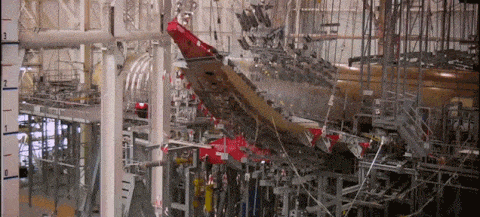You are using an out of date browser. It may not display this or other websites correctly.
You should upgrade or use an alternative browser.
You should upgrade or use an alternative browser.
The bolts that hold our wings on.
- Thread starter SixPapaCharlie
- Start date
Dan Thomas
Touchdown! Greaser!
- Joined
- Jun 16, 2008
- Messages
- 10,755
- Display Name
Display name:
Dan Thomas
Dan, tell me something about my Cherokee 140 so I can repeat it to assure my passengers that the wing isn't going to fall off. So far I've got nuttin.
The engineers that designed that 140 back in the '60s knew what they were doing. I can find only one AD addressing wing spar cracks (87-08-08) and your airplane should have been taken care of long ago.
If you're getting decent annual inspections, not just a walkaround and a signature, and the airplane doesn't have a bunch of corrosion, failure is very unlikely.
StevieTimes
Line Up and Wait
Grumman wings are plenty strong.
https://www.ntsb.gov/_layouts/ntsb.aviation/brief.aspx?ev_id=20001212X20121&key=1
A Tiger on downwind for 16L at VNY ran into the wake turbulence of an airliner that had just crossed overhead on the ILS to runway 8 at BUR. The Tiger landed safely.
"The outboard 1/3 of the aircraft's left wing was deformed upward about 5 degrees with respect to the inboard section during an encounter with wake turbulence while on downwind leg for landing. The upper wing skins of both wings exhibited compression buckling, and the mass balance weights on both ailerons were separated and fell from the aircraft. The pilot reported that the flight was unremarkable until, while downwind for landing, there was an instantaneous jolt of sudden severe turbulence that ended before he could take any action. Data obtained from the airport noise abatement office showed that 2 minutes 23 seconds prior to the encounter, a heavy transport aircraft passed over the location on an ILS approach to another airport 6 miles away; the transport airplane was about 500 feet higher than the accident airplane as it crossed the location."
I can see that being THE BEST FEATURE EVAR in Foreflight WingX version 598 or whatever... something that calculates wake turbulence by looking at ADS-B traffic, knowing who is heavy, looking at their altitude and speed, the wind, and warning somebody about a potential encounter.
That situation is very, very scary. I heard about a similar encounter with a Piper Arrow, but the wings were fine. They found them safely in a guy's pool below.
(too soon?)
DavidWhite
Final Approach
The Pilatus wings wiggle quite a bit in turbulence, and outboard of the strut they move a lot in the caravan. I’ve learned just not to look at the wings in moderate turbulence.
Briar Rabbit
Line Up and Wait
When I worked at Cessna one of my engineering buddies had done a stint at Boeing working on B-52's. He told us vertical movement on the wingtips during a normal GAG cycle was 16 to 22 feet depending on loading. Some parts had to be reskinned at a certain hour level, don't remember how many hours though. GAG stands for ground-air-ground.The Pilatus wings wiggle quite a bit in turbulence, and outboard of the strut they move a lot in the caravan. I’ve learned just not to look at the wings in moderate turbulence.
Mooney Fan
Line Up and Wait
2 part epoxy supersedes duct tapeAm I the only one that sees what is missing up in there? Where is the duct tape?
Checkout_my_Six
Touchdown! Greaser!
yup....JB weld is awesome. 
Mooney Fan
Line Up and Wait
Bunch to do about nothing. Plenty of built in slop with aircraft wings


Mtns2Skies
Final Approach
- Joined
- Jul 12, 2008
- Messages
- 5,621
- Display Name
Display name:
Mtns2Skies
Well MOST Grumman wings are plenty strong... But Bryan's, well...Grumman wings are plenty strong.
OkieFlyer
En-Route
I looked over Bryan's plane at the last fly-in. I noticed something very disturbing about one of his wings. I didn't have the heart to tell him though. Hoping he'll see it himself and fix it before it's too late.


ARFlyer
En-Route
Those wings attachments are quite strong when force is applied in the expected directions.
A low wing accident I was helping out taking pictures on suffered a very hard landing. The both wings looked like Corsair wings. They were still attached even after being bent almost 30° to the vertical.
A low wing accident I was helping out taking pictures on suffered a very hard landing. The both wings looked like Corsair wings. They were still attached even after being bent almost 30° to the vertical.
wrbix
Pattern Altitude
- Joined
- Jul 25, 2013
- Messages
- 2,398
- Display Name
Display name:
Pilot Lite
....and all that rain into the open canopy.It's probably because he spilled that coffee on the seat.
PaulS
Touchdown! Greaser!
If you mix it well.2 part epoxy supersedes duct tape
